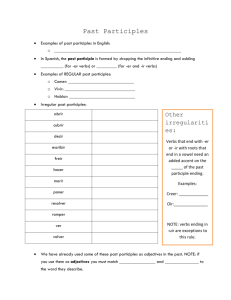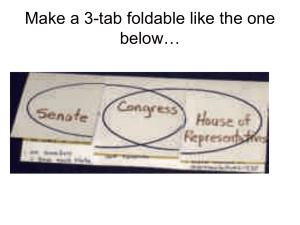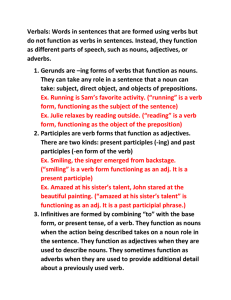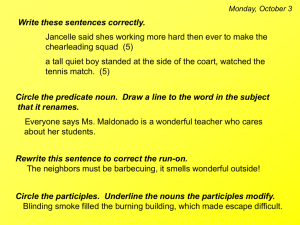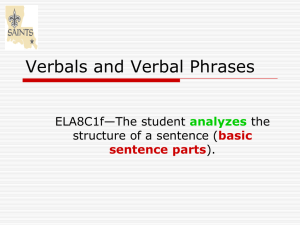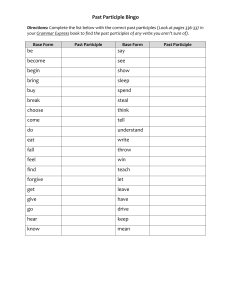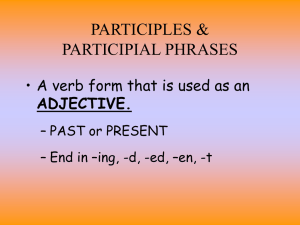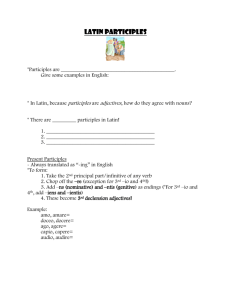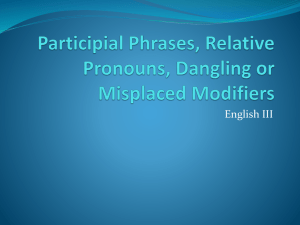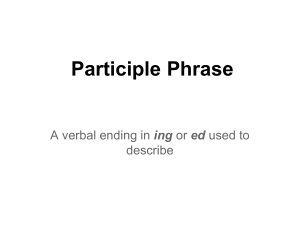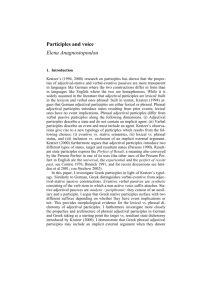GOOD TO SEE YOU AGAIN, AND HOW ARE YOUR PARTICIPLES
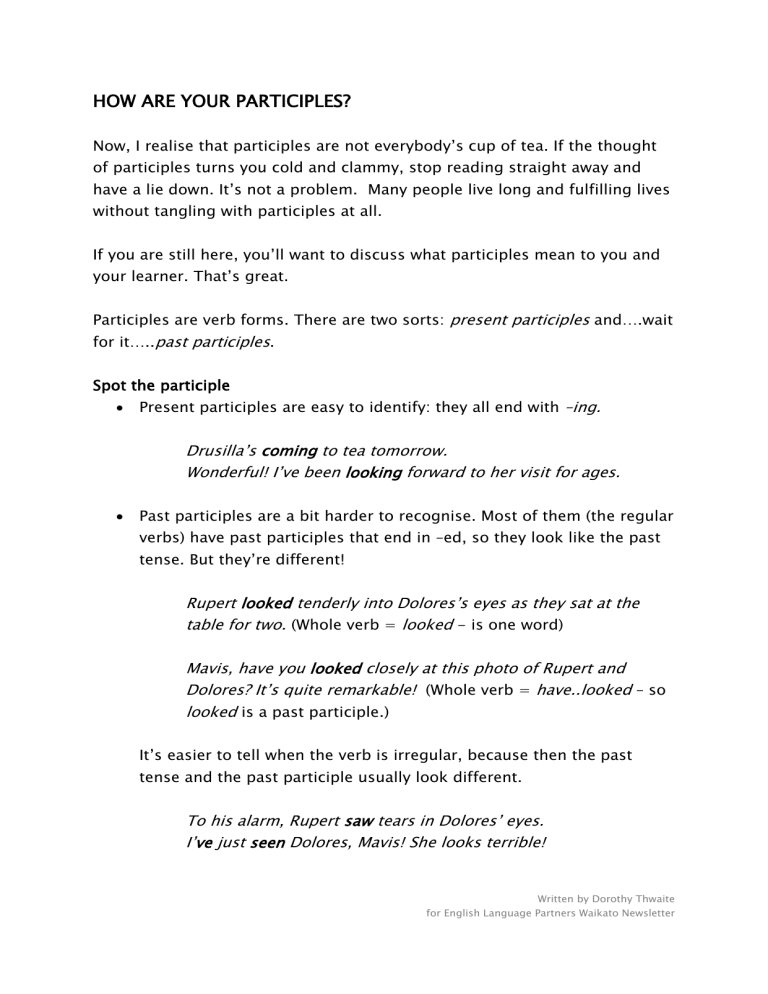
HOW ARE YOUR PARTICIPLES?
Now, I realise that participles are not everybody’s cup of tea. If the thought of participles turns you cold and clammy, stop reading straight away and have a lie down. It’s not a problem. Many people live long and fulfilling lives without tangling with participles at all.
If you are still here, you’ll want to discuss what participles mean to you and your learner. That’s great.
Participles are verb forms. There are two sorts: present participles and….wait for it…..
past participles.
Spot the participle
Present participles are easy to identify: they all end with –ing.
Drusilla’s coming to tea tomorrow.
Wonderful! I’ve been looking forward to her visit for ages.
Past participles are a bit harder to recognise. Most of them (the regular verbs) have past participles that end in –ed, so they look like the past tense. But they’re different!
Rupert looked tenderly into Dolores’s eyes as they sat at the table for two. (Whole verb = looked - is one word)
Mavis, have you looked closely at this photo of Rupert and
Dolores? It’s quite remarkable! (Whole verb = have..looked – so looked is a past participle.)
It’s easier to tell when the verb is irregular, because then the past tense and the past participle usually look different.
To his alarm, Rupert saw tears in Dolores’ eyes.
I’ve just seen Dolores, Mavis! She looks terrible!
Written by Dorothy Thwaite for English Language Partners Waikato Newsletter
The use of participles
Participles are used to make up verb forms containing more than one word – like
Who’s been eating the biscuits again?
Have you fed the cat, Albert?
My personal theory is that they are called participles because they are only part of a verb. We probably shouldn’t say, for example
Who eating the biscuits again?
Or
You fed the cat, Albert? at least in standard English.
We must acknowledge however that there are other kinds of English. For you and me, forms like I seen and he done are signs of a world going mad. But they are used and are therefore OK English in some situations. Not for your learner. (But we all hear someone rung you yesterday from time to time, and it really isn’t a big deal. (Certainly not worth losing friends over.)
Our learners have to come to terms with the fact that
Every sentence in English needs a verb in it
And
Sometimes the verb is one word and sometimes it’s two words (or even three). This can be quite tricky for learners, especially since one is allowed to put all sorts of other words between the bits of the verb.
Have you really been running this ostrich farm all by yourself,
Persephone?
I’d never have believed it !
Written by Dorothy Thwaite for English Language Partners Waikato Newsletter
You will have already noticed that the participle is always accompanied by an auxiliary verb that helps to complete the verb.
The present participles go with parts of the verb “be” – is, are, was, were.
Claude is looking forward to Jonquil’s visit.
The penguins were waddling in single file towards the water.
The past participles go with part of the verb “have” - has, have, had
I have always wanted to write a grammar book.
Colonel Blunder had barely finished his whisky when the door burst open.
Participles in disguise
Just to make things even more interesting, participles pop up in other roles too: for example, they can appear as adjectives
What a thrilling performance, my dear! I’m quite exhausted by all the emotion!
Participle forms can act as nouns in a sentence
Hortense just adores knitting!
Do keep an eye out for participle activity – not just in grammar books but in everyday communication.
Written by Dorothy Thwaite for English Language Partners Waikato Newsletter
